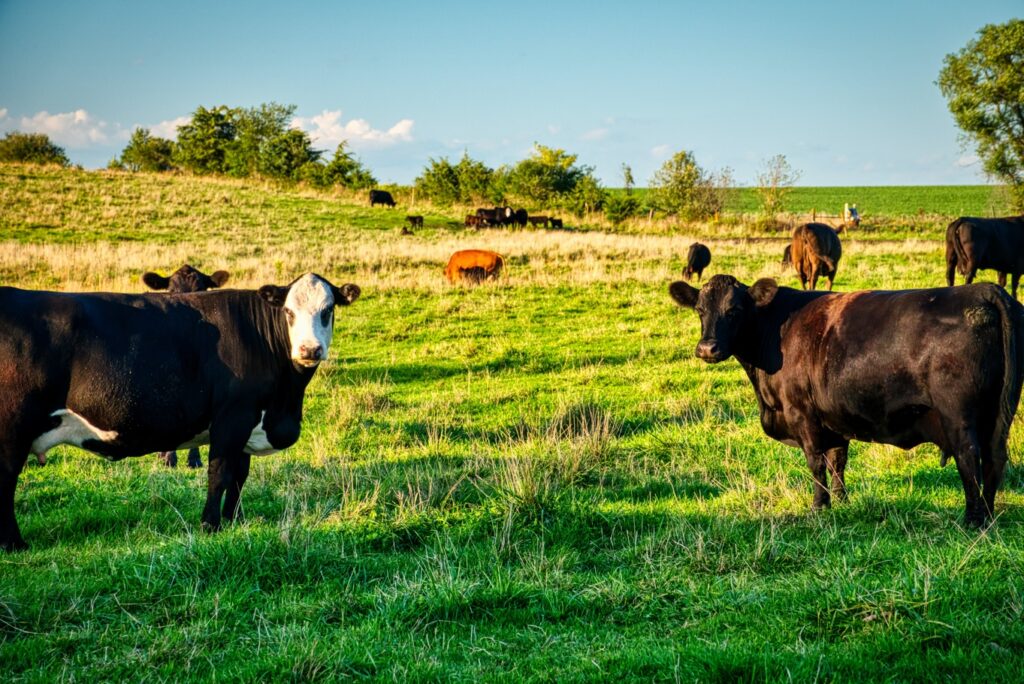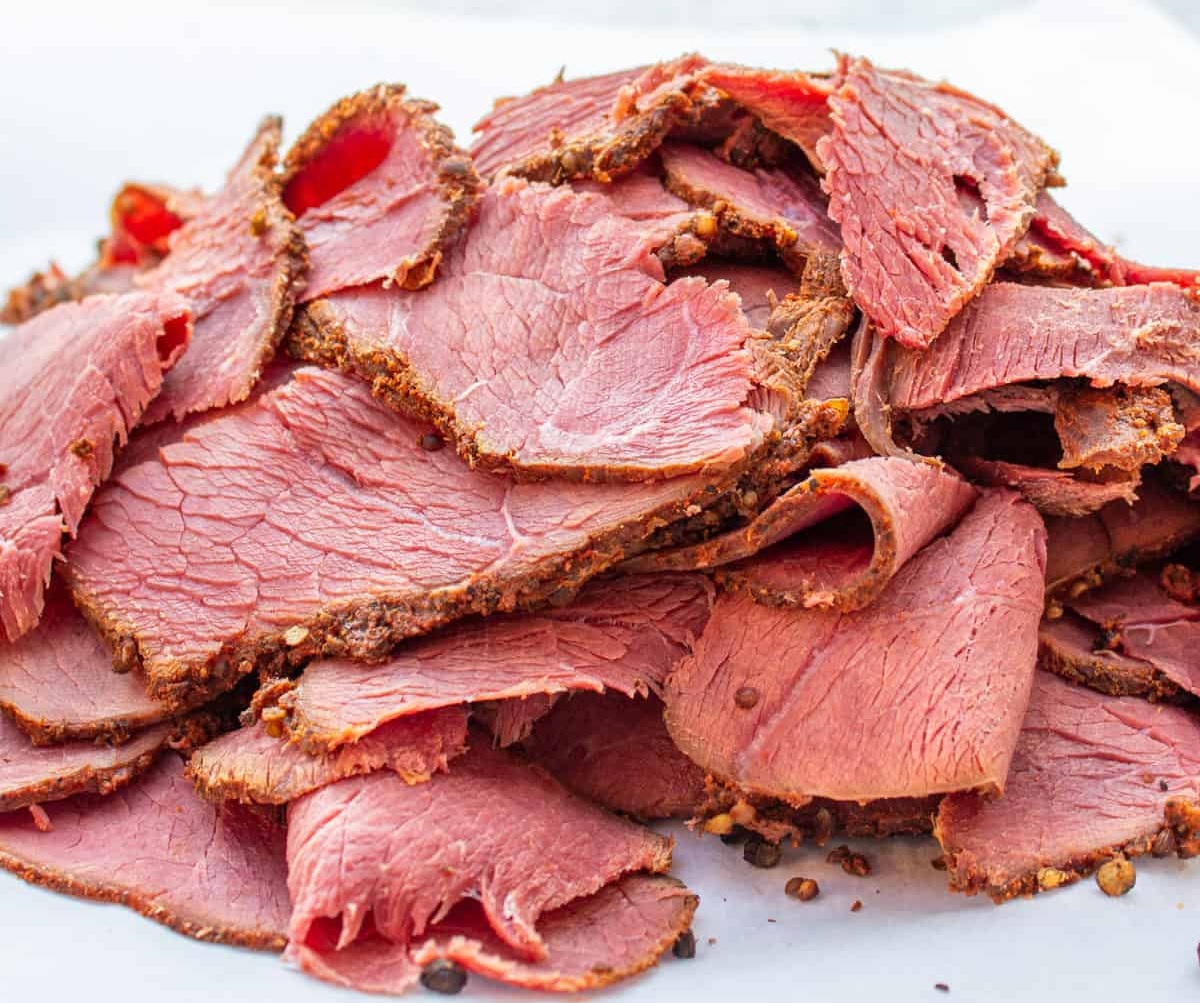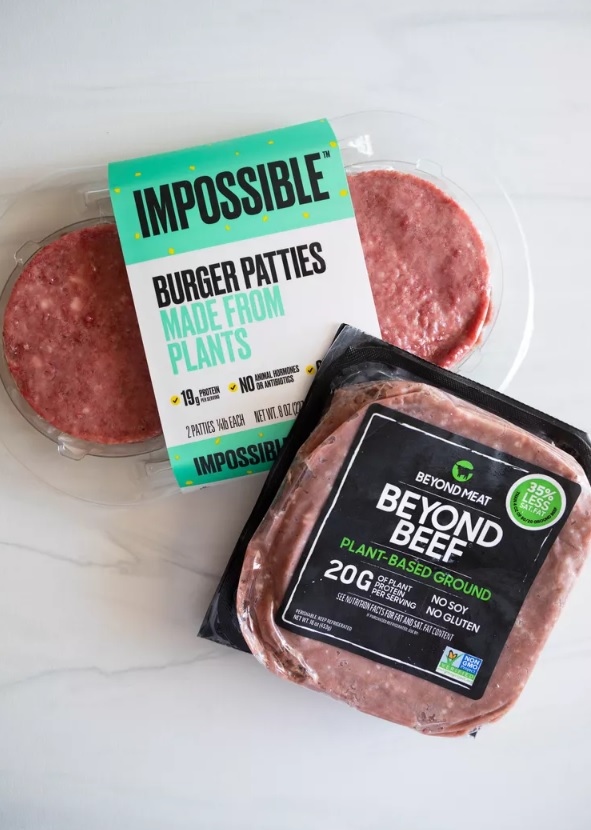Surprising Health Benefits of Grass-Fed Beef
What’s the first thing that comes to your mind when you think of a juicy, succulent steak? Is it the aroma of sizzling meat on a grill? The satisfying crunch of a perfectly seared crust? Or perhaps the image of a hearty meal shared with loved ones? Whatever your answer may be, there’s no denying that beef is a crowd-pleaser and a staple in many diets around the world.
But did you know that not all beef is created equal? Enter grass-fed beef – the prime choice for discerning meat connoisseurs. Unlike its grain-fed counterpart, grass-fed beef comes from cows that graze on natural grass and foliage, resulting in meat that’s not only delicious but also packed with nutrients. Think of it as nature’s very own superfood, delivered straight to your plate! [1]
In this article, we’ll closely examine the surprising grass-fed beef benefits, explore the nutritional powerhouse that is grass-fed meat, and highlight the key differences between grass-fed and grain-fed beef. So, whether you’re a seasoned beef enthusiast or a curious foodie, get ready to sink your teeth into some mouthwatering knowledge!
What is Grass-Fed Meat?
When it comes to choosing red meat, there are many options available, from conventional to organic to grass-fed. But what exactly is grass-fed meat?
Put simply, grass-fed meat comes from animals that have grazed on natural grass pastures rather than being fed grains and other processed foods. This difference in the diet significantly impacts the nutrient profile of the meat, making grass-fed beef a nutritional superfood. [2]
Not to mention, grass-fed meat is also free from hormones and antibiotics, often given to conventionally raised animals. So not only grass-fed beef benefits your health, but it’s also better for the environment and the welfare of the animals.
The Natural Benefits of Grass-Fed Beef
Traditionally, beef is obtained from cows that are confined in tight spaces. However, grass-fed cows provide a delectable and safer alternative. Here’s an overview of some of the natural grass-fed beef benefits that you can enjoy:
- Higher in nutrients: Grass-fed beef contains abundant essential nutrients like vitamins A and E, omega-3 fatty acids, and conjugated linoleic acid (CLA), which can help reduce inflammation and improve overall health.[3]
- Lower in fat: Compared to grain-fed beef, grass-fed beef is lower in total fat content, and the fat it does contain is much healthier for you. It also has a healthier ratio of omega-3 to omega-6 fatty acids.
- Antibiotic and hormone-free: Grass-fed beef is raised without antibiotics and added hormones, making it a healthier option for you and the environment.
- Better for the environment: Grass-fed beef is a more sustainable and eco-friendly option compared to grain-fed beef. Grass-fed cattle are often raised on smaller farms and require less energy to produce, making it a more sustainable choice for the planet.
- Better taste: Grass-fed meat tastes better due to the cow’s diverse and clean diet, which enhances the flavor profile.
So next time you’re at the meat counter, consider giving grass-fed beef a try. Your taste buds and your body will surely thank you, as the health benefits of grass-fed beef seem never ending!
What Can Be Potential Downside of Eating Grass-Fed Beef?
As with any food, there are some potential risks associated with consuming grass-fed beef. However, these risks are relatively minimal compared to conventionally raised beef.
For instance, grass-fed beef has a low risk of bacterial contamination, such as from E. coli and Salmonella, which can occur during the slaughtering and processing of the meat. So, it’s important to handle and cook the meat properly to reduce the risk of infection.
Additionally, grass-fed beef tends to be leaner than grain-fed beef, which means that it may be more prone to drying out and becoming hard to chew if not cooked properly.
Overall, while there are potential risks to consuming grass-fed beef, these can be mitigated with proper handling and cooking techniques. And the numerous grass-fed beef benefits completely outweigh these minute concerns.
“Ready to experience the benefits of high-quality grass-fed beef? Check out Butcher Box USA’ partners selection who provide premium meats today and take your meals to a whole new level!”
Some Nutrition Facts About Grass-Fed Beef
Grass-fed beef is not only delicious, but it’s also incredibly nutritious. Here are some nutrition facts you should know about this type of meat:
- Rich in protein: Grass-fed beef is an excellent source of high-quality protein, providing all the essential amino acids your body requires to build and repair tissues.
- More omega-3 fatty acids: Compared to grain-fed beef, grass-fed beef has a healthier fat profile as it contains two to four times more omega-3 fatty acids. These are essential for heart health, brain function, and reducing inflammation and risk of other chronic diseases in the body.
- Higher in CLA: Studies have shown that grass-fed beef has higher levels of conjugated linoleic acid (CLA), which is linked to reduced inflammation, improved insulin sensitivity, and reduced risk of heart disease.[4]
- Rich in vitamins and minerals: Grass-fed beef is an excellent source of numerous essential vitamins and minerals, including vitamin B12, zinc, selenium, and iron.
- Lower in calories: Grass-fed beef is lower in calories than grain-fed beef, making it a great option for those trying to lose weight or maintain a healthy weight.
- Filled with Vitamin E: Grass-fed beef also contains higher levels of vitamin E and beta-carotene, powerful antioxidants that can protect the body against damage caused by free radicals.
And if you want to absorb all those grass-fed beef benefits, consider signing up for Butcher Box. Their grass-fed beef is top-quality and delivered straight to your door, making it easier than ever to enjoy the benefits of this delicious and nutritious meat.
The Difference Between Grass-Fed & Grain-Fed Beef
The variation between grass-fed and grain-fed beef is primarily in the cattle’s diet. While grass-fed beef comes from animals that have been exclusively fed grass or forage throughout their lives, grain-fed beef comes from cattle that have been fed a diet consisting mainly of corn or soy.
This difference in the diet leads to varied nutrient content of the meat as well as the taste and texture. Grass-fed beef tends to be leaner and has a more robust, natural flavor, while grain-fed beef is often marbled and has a softer texture.[5]
Another difference is in the way the cattle are raised. Grass-fed cattle are typically allowed to roam and graze on pasture, while grain-fed cattle are often confined to feedlots. This contrast in living conditions can affect the well-being of the animals as well as the environmental impact of farming practices.
What are the best places to order grass-fed beef online?
As seen in our review section the best places to order grass-fed beef from are:
REP Provisions: Specialized in grass-fed beef, grass-fed bison and more grass-fed gamey type of meats.
Missouri Farm Fresh: Shipped straight from the farm, no middle-man. 100% grass-fed local American beef and more.
Farm Foods: Offers 100% grass-fed beef and pasture raised meats from American ranchers.
The Honest Bison: Great grass-fed alternative for beef and extremely healthy.
Conclusion
In conclusion, grass-fed beef benefits the ones looking for a more sustainable and healthier option. The natural benefits of grass-fed beef are many, including higher levels of nutrients, lower fat content, and a better fatty acid profile.
On the other hand, grain-fed beef is more readily available and cheaper, but it comes with a host of potential risks, such as antibiotic resistance and environmental damage.
Overall, it’s clear that grass-fed beef benefits both personal health and environmental sustainability. By choosing to support responsible farmers and ranchers who raise their cattle on grass, you can help create a positive impact on the world.
So why not give it a try? You can start by checking out Butcher Box USA’s selection of grass-fed meat partners, which are delivered straight to you for an added convenience.
FREQUENTLY ASKED QUESTIONS
Is grass-fed beef actually healthier?
Yes, grass-fed beef is generally considered to be healthier because it contains higher levels of essential nutrients like omega-3 fatty acids, conjugated linoleic acid (CLA), and antioxidants. It also has lower levels of unhealthy fats such as saturated fat and higher levels of beneficial nutrients such as vitamin E and beta-carotene.
Does grass-fed beef build muscle?
Grass-fed beef is an incredible source of protein, an essential component for building and repairing muscle tissue. Additionally, grass-fed beef contains higher levels of certain nutrients, such as CLA, which may have anabolic effects and support muscle growth.
What are the pros and cons of grass-fed meat?
Pros: Grass-fed beef is generally considered to be healthier, more sustainable, and more humane than conventionally raised beef. It contains higher levels of essential nutrients, lower levels of unhealthy fats and is produced using more environmentally friendly and ethical practices.
Cons: Grass-fed beef can be more expensive and harder to find than conventionally raised beef. Additionally, some people may find that grass-fed beef has a different taste or texture than conventionally raised beef.
Does grass-fed beef digest better?
Grass-fed beef may be easier to digest for some people than conventionally raised beef because it is leaner and contains less unhealthy fats. Moreover, the higher levels of omega-3 fatty acids in grass-fed beef may have anti-inflammatory effects, which may support digestive health.
Why does grass-fed beef taste different?
It’s because of the differences in the diet and lifestyle of the animals. Grass-fed beef tends to be leaner and has a more distinct flavor, while conventionally raised beef may be fattier and have a milder flavor. Additionally, the diet of grass-fed cattle typically includes a variety of grasses and other plants, which can impact the flavor of the meat.
References:
Descalzo, A.M., Insani, E.M., Biolatto, A., Sancho, A.M., García, P.T., Pensel, N.A. and Josifovich, J.A., 2005. Influence of pasture or grain-based diets supplemented with vitamin E on antioxidant/oxidative balance of Argentine beef. Meat science, 70(1), pp.35-44.
French, P., O’Riordan, E. G., Monahan, F. J., Caffrey, P. J., & Mooney, M. T. (2000). The eating quality of meat of steers fed grass and/or concentrates. Meat Science, 56(4), 347-357.
Ponnampalam, E.N., Mann, N.J. and Sinclair, A.J., 2006. Effect of feeding systems on omega-3 fatty acids, conjugated linoleic acid and trans fatty acids in Australian beef cuts: potential impact on human health. Asia Pacific Journal of Clinical Nutrition, 15(1), pp.21-29.
Daley, C. A., Abbott, A., Doyle, P. S., Nader, G. A., & Larson, S. (2010). A review of fatty acid profiles and antioxidant content in grass-fed and grain-fed beef. Nutrition journal, 9(1), 1-12.
Hernandez, A. V., & Pasupuleti, V. (2010). Defining and exploring the relationship between physician empathy and clinical outcomes. Medical education, 44(12), 1173-1181.





